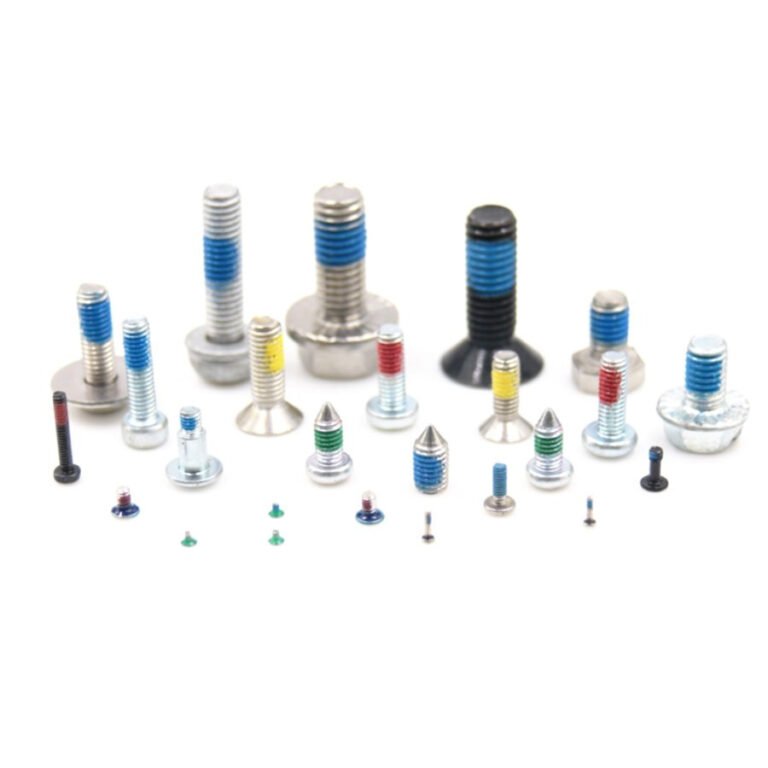Experiencing inconsistent bolt performance? I struggled too until I realized coating makes a big difference.
Coatings change friction levels on threads and under heads, affecting torque-tension relationship and installation accuracy.
When tightening bolts, coating isn’t just about corrosion—it can change how much torque actually turns into clamp force. Let's dive in.
What are the different coatings that can be applied to screws?
Need to know your coating options and how they perform? I catalogued them when sourcing coating solutions for exports.
Common screw coatings include plain zinc, yellow/blue chromate, phosphate, zinc flake, Teflon/PTFE, black oxide, and nickel plating. Each impacts friction differently.
Overview of Coating Types and Applications
Different coatings serve different purposes:
- Plain zinc plating: Offers basic rust protection; moderate, consistent friction.
- Yellow/blue chromate over zinc: Adds color and some protection; friction varies slightly.
- Phosphate coating (plus oil): Increases friction, helps lubricant retention.
- Zinc flake coatings: Low friction, consistent torque-tension, often Cr-free.
- Teflon/PTFE coatings: Very low friction; ideal for precise torque control.
- Black oxide: Minimal protection, slight friction change, mainly aesthetic.
- Nickel plating: Good corrosion resistance, higher friction, may need lubrication.
Which one to choose depends on your torque settings and desired bolt preload accuracy. I’ll show how each works.
What does phosphate coating do for screws?
Wondering why your screws feel grippy despite being coated? That’s likely phosphate doing its job.
Phosphate coating creates a rough, porous surface that locks in lubricant and increases friction, helping prevent loosening under vibration.
Why Phosphate Coating Works for Torque Control
Phosphate coatings (like zinc or iron phosphate) build a micro-textured layer that holds oil or wax. Under friction, this textured surface increases resistance. That helps maintain clamp force by reducing embedment and thread relaxation. It also aids self-locking in dynamic environments.
Torque control is improved too. The added friction means you need less torque to generate the same preload without worrying about overtightening. But you must apply consistent lubricant to achieve repeatable results—dry phosphate causes unpredictable friction variation.
When I spec phosphate-coated fasteners, I always include lubrication instructions. That small step made our torque readings consistent within ±5%.
What is the corrosion resistant coating for fasteners?
Want fasteners that resist rust in tough environments? I learned which coatings last through testing and failure analysis.
Top corrosion-resistant coatings include zinc flake, nickel plating, hot-dip galvanizing, and PTFE-treated coatings.
Best Coatings for Longevity and Torque
Different coatings offer varied protection and friction characteristics:
| Coating | Corrosion Resistance | Torque Impact |
|---|---|---|
| Zinc flake | ~500–1000 hrs salt spray | Low/consistent friction |
| Nickel plating | 200–500 hrs | Higher friction; may need lube |
| Hot-dip galvanizing | 1000+ hrs (thick coating) | Moderate friction; rough surface |
| PTFE-treated (Teflon) | High when combined with Zn | Very low friction; precise torque |
| Phosphate+oil | 100–300 hrs | Increased friction; self-locking |
Zinc flake coatings hit the sweet spot: strong corrosion protection and reliable torque control. Nickel plating works too, but you have to standardize lubrication. Hot-dip is rugged, but rough surface means variable torque. Teflon-coated is great for torque precision, but needs testing for corrosion life.
Why use Teflon coated bolts?
Looking for exact torque-to-clamp performance? I switched to Teflon-coated bolts for a medical device assembly—and saw immediate improvements.
Teflon (PTFE) coated bolts offer ultra-low friction, consistent torque-to-preload performance, and resistance to corrosion and chemicals.
When Teflon Bolts Make a Difference
PTFE reduces friction drastically—nut surface friction drops to around 0.08–0.10 μ. Compare that to 0.12–0.18 for zinc flake or up to 0.25 for plain zinc. Lower friction gives you more clamp force for the same torque, or the same clamp with less torque.
This is ideal when clamp accuracy is critical: like sealing medical components or precision bearings. Also, PTFE is chemically inert and adds corrosion resistance.
The downside? PTFE coating can wear or melt above ~260 °C. For high-temp parts, test compatibility.
I recommend doing a torque-to-yield test on a small batch first. In our case, Teflon bolts achieved consistent preload within ±2%, versus ±7% with zinc flake.
Conclusion
Coatings dramatically affect torque control by altering friction. Choose based on your precision needs:
- Phosphate for anti-vibration grip
- Zinc flake for corrosion + torque consistency
- Teflon for precision preload and clean environments
Match coating to performance, not just protection, and you’ll hit torque targets every time.


